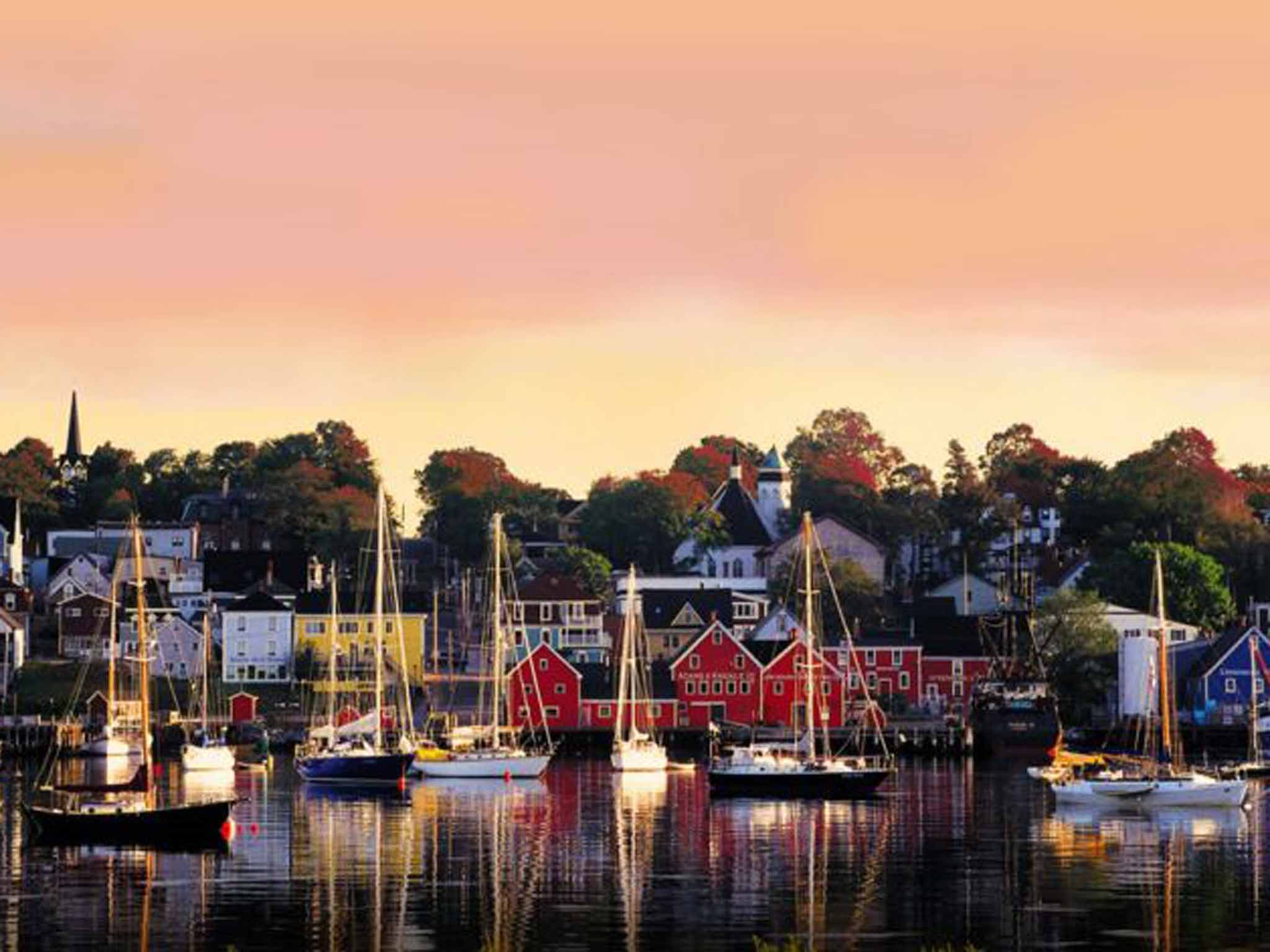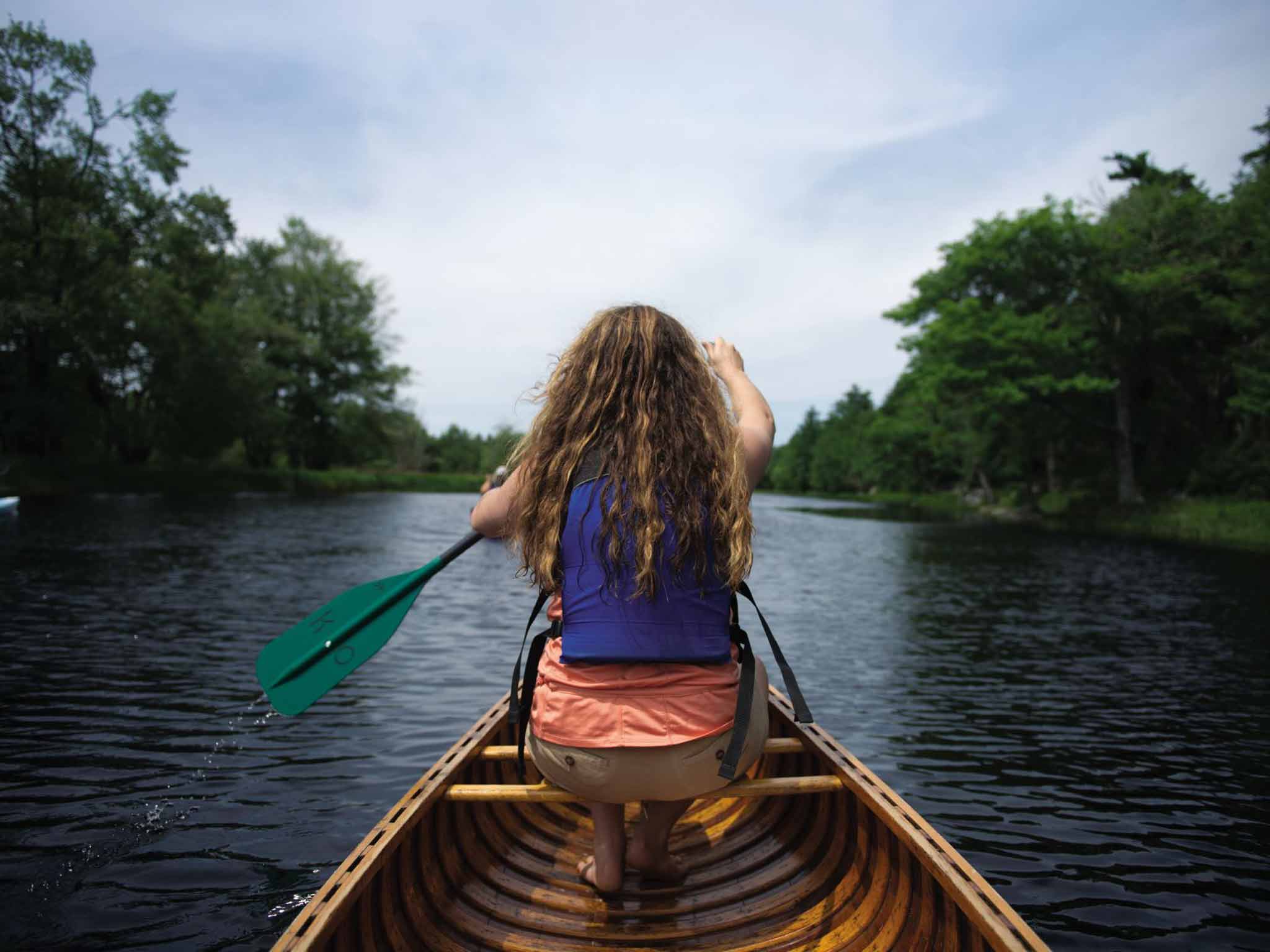Nova Scotia: Caught between woods and water
First prize in last year's IoS/Bradt travel writing competition was a trip to Nova Scotia – and the chance to write about it in these pages. Here, winner Elizabeth Gowing discovers the significance of the humble tree in this maritime province

Your support helps us to tell the story
From reproductive rights to climate change to Big Tech, The Independent is on the ground when the story is developing. Whether it's investigating the financials of Elon Musk's pro-Trump PAC or producing our latest documentary, 'The A Word', which shines a light on the American women fighting for reproductive rights, we know how important it is to parse out the facts from the messaging.
At such a critical moment in US history, we need reporters on the ground. Your donation allows us to keep sending journalists to speak to both sides of the story.
The Independent is trusted by Americans across the entire political spectrum. And unlike many other quality news outlets, we choose not to lock Americans out of our reporting and analysis with paywalls. We believe quality journalism should be available to everyone, paid for by those who can afford it.
Your support makes all the difference.'Would you like a cup of tea?" the Lunenburg bookstore owner asks me. I take it as sarcasm. I have, after all, settled myself comfortably in the shop's armchair and sunk deep in a book; I was on the point of kicking my shoes off until I remember that this is not, in fact, my living room.
"I'm so sorry. I didn't mean to make myself too much at home." I close the book and start gathering up my bags.
The bookstore owner looks at me quizzically. "No, you're good. I'm serious – I'm about to put the kettle on; would you like a cup of tea?"
I'm trapped in a quintessentially British dilemma – drinking tea or saying sorry. And trapped in a quintessentially Nova Scotian experience – the friendliness, the free refill hot drinks … and the bookstore.
On my tour of Nova Scotia it seems that everywhere I stop there is a bookshop. Often, as with the magical Lunenburg Bound books, it's a combination of new books and secondhand, enabling the vanillin fragrance of old pages to linger, even around Go Set a Watchman. In Annapolis Royal the Mad Hatter store seems to have taken a purely scent-based approach to its stock, combining books with the pungency of leather goods from sheepskin rugs to motorbike jackets.
There's a huge secondhand book warehouse where I stop to get directions for the Glooscap First Nations centre, and the "books and curios" shack in the middle of nowhere, where I'm asked to sign the guest book as if my visit is a special occasion. In Halifax, I'm told I have 10 stores to choose from, though I get to just two. In an afternoon stop in one coastal town (population: 2,300) I'm directed to two bookshops but told I'm too early for the third, because it opens only at 10pm.

Why the high concentration of such treasures here? The people I ask have a range of answers. Property prices might be one – there's little competition for retail space (Nova Scotia has just 17 people per square kilometre, compared with 413 in England). But it might also be that this is a province of old-fashioned indulgences. This, Canada's second smallest province – a peninsula and islands tucked at the bottom of the country's wild eastern shore – is a place to enjoy rainy day pleasures.
The delights of the bookstores are not just the stock, but the people I find inside. When they're not offering me tea amid the Unesco-listed colonial architecture of Lunenburg, they're offering free advice or political debate. At Wildfire Pottery and Books, on the Cabot Trail, I find an easy barter market (as if it's a metaphor, I get a history book on the Gaelic migration in exchange for my copy of Nova Scotia laureate Alistair MacLeod's novel, which I've just finished) and a craft workshop where alongside seals and puffins charmed from the nearby coastline into clay form, jewellery, lanterns, and decorative baubles are all cut and origamied from old books.
"This is the forest primeval" wrote Longfellow, of the Acadian lands I drive through for days. "Acadian" is thought to have come from the native Mi'kmaq word akade for "abundance" and the woods are indeed bountiful, and sometimes feel relentless. "The Christmas Tree Capital of the World" boasts a sign on the approach to Kejimkujik National Park, where I stay in a chalet amid evergreens right at the lake's edge. The plantations, like Burnham Wood come to Dunsinane in "old" Scotland, will soon be on the move as the trees make the annual migration to town squares, company foyers and living rooms in time for December festivities.
These forests are an unforgettable part of a visit to Nova Scotia. But it's what comes from them that really makes a trip here worthwhile. They're the home of the beaver (I didn't see one) and the black bear (I did, from a safe distance, but close enough that even a shaking arm could capture it with a camera). The woods also produce not only the paperbacks but the maple syrup I found drizzled across the province. It's produced as sugar lumps and as liqueur; it's stirred into beans and glazed across bacon, sweetening everything, whether it needs it or not.
Those trees that don't reach their apotheosis in either sappy sweetmeats or volumes shelved in independent bookstores become Nova Scotia's distinctive lumber buildings. Outside the most industrial zones it seems that every structure is made of wood. Outside every house are the colourful Muskoka chairs – also of wood.
Of course Nova Scotia is a province torn between the woods and the water. You are never more than 67km from the ocean; this was the point of arrival for one and a quarter million immigrants to Canada from Europe in the decade after the Second World War. I glimpsed whales and lighthouses, ate lobster and visited the Titanic exhibition describing the recovery effort launched from Halifax and displaying poignant artefacts salvaged from the ship. However, it was not the seascapes but the landscapes that stay with me after my Nova Scotia adventures; woods that are lovely, dark and deep – just like the unexpected hot drinks I was offered at every stop.
Elizabeth Gowing's latest book, 'The Rubbish-Picker's Wife; an unlikely friendship in Kosovo', from Elbow Publishing, is £9.99. To read the 2014 IoS/Bradt Travel Writing Competition runner-up Lucy Clark's piece on Pas-de-Calais, go to bit.ly/BradtCalais.
Getting there
Elizabeth Gowing's itinerary was organised by Frontier Canada (020 8776 8709; frontier-travel.co.uk), which offers similar trips from £1,660pp including return Air Canada flights from Heathrow to Halifax, plus five days' SUV rental and seven nights' accommodation.
Staying there
The Halliburton, Halifax (001 902 420 0658; thehalliburton.com). Double rooms start at C$139 (£68).
Mersey River Chalets and Nature Retreat, Caledonia (001 902 682 2443; merseyriverchalets.ns.ca). Doubles start at C$110 (£54).
Water's Edge Inn and Gallery, Baddeck (001 902 295 3600; thewatersedgeinn.com). Doubles start at C$155 (£77).
More information
Destination Canada (destinationcanada.com)
Join our commenting forum
Join thought-provoking conversations, follow other Independent readers and see their replies
Comments